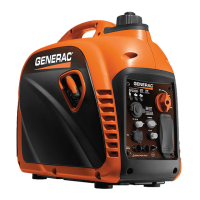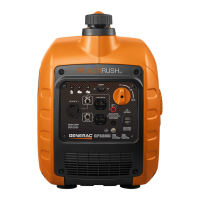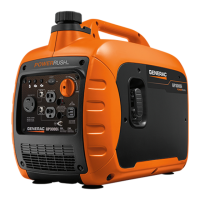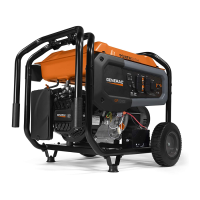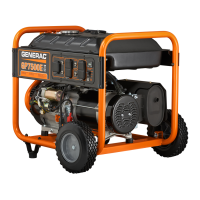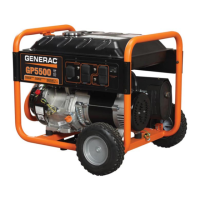*
Warning:
Do not field flash alternator more
than two times in sequence. If the unit has
not produced power after two attempts, other
issues exist and need to be addressed.
RESULTS:
1. Refer back to flow chart.
TEST 5 – CHECK BRUSHES
DISCUSSION:
The function of the brushes and slip rings is to pro-
vide passage of excitation current from stationary
components to the rotating rotor. Brushes are made
of a special long lasting material and seldom wear
out or fail. However, slip rings can develop a tarnish or
film that can inhibit or offer a resistance to the flow of
electricity. Such a non-conducting film usually devel-
ops during non-operating periods. Broken or discon-
nected wiring can also cause loss of excitation current
to the rotor.
PROCEDURE:
1. See Figure 6. Carefully inspect brush wires. Make sure
they are properly and securely connected.
2. Disconnect the red and white wire from the brush assem-
bly. Remove the brush assembly from the bearing car-
rier. Inspect the brushes for excessive wear, or damage.
3. Inspect the rotor slip rings. If they appear dull or tar-
nished, they may be polished with fine sandpaper. DO
NOT USE METALLIC GRIT TO POLISH SLIP RINGS.
Figure 6. Brushes and Slip Rings
RESULTS:
1. Repair, replace or reconnect wires as necessary.
2. Replace any damaged slip rings or brush holder.
3. Clean and polish slip rings as required.
4. If brush assembly and slip rings look good proceed to
Step 5.
Page 28
PART 2
AC GENERATORS
SECTION 2.3
AC DIAGNOSTIC TESTS
CAPACITOR
DEPRESS SWITCH FOR
ONE SECOND
PLUG ENERGIZING CORD
INTO AC OUTLET
CAPICITOR REMAINS CONNECTED
TO GENERATOR
Danger: The capacitor may need to be
discharged before testing. A capacitor can
be discharged by crossing the terminals
with a metal insulated screw driver.
Danger: Use proper protective equipment
when dealing with a capacitor that has
exploded.
Figure 5. Connecting Energizing Cord

